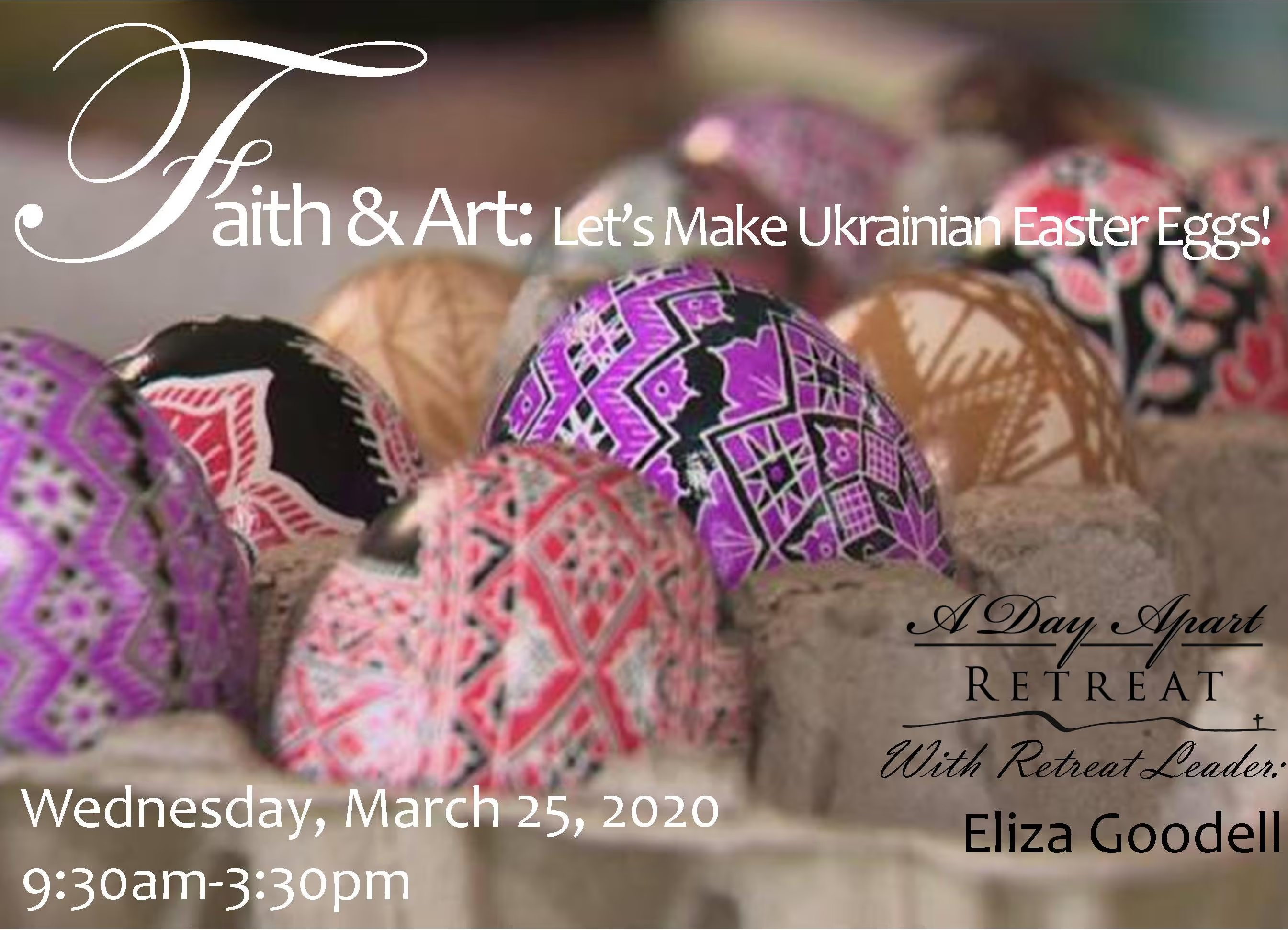February 24, 2020

Have you ever wondered where the tradition of "Easter Eggs" comes from?
The art of making decorated eggs comes from Ukraine and the tradition of “pysanky.” Pysanky, which comes from the Ukrainian verb “to write), dates back to pagan times, when people in this region worshipped the sun. It was a source of all life since it warmed the earth. In addition, eggs (symbolizing new life) were an important part of spring rituals, serving as benevolent talisman.
When Christianity became accepted in the region in 988, the decorated eggs were adapted for Easter to represent Christ’s Resurrection. Thus, the tradition of Easter Eggs was born. The eggs were viewed as “magical” objects, which would enable good to triumph over evil!
Throughout the centuries, colors and symbols took on different meanings. The designs on the pysanky--made using a batik (wax-dye) method using beeswax and a stylus--include birds signifying happiness, wheat/pine branches for health, the triangle symbolizing the Holy Trinity. Deer represent prosperity and strength; fish symbolize Christianity, and infinite lines signify eternity.
The original dyes were prepared from roots, bark, dried plants, berries, and insects. The pysanky were made at night when the children were asleep. By Holy Thursday a large basket of decorated eggs would have been prepared to give to the local priest, family and friends, farm animals, and to put near beehives and bird nests to encourage production.
Eliza Goodell has been giving these workshops for over 20 years. Why not take your Easter eggs to a new level this year and give it a try? Making the eggs is a journey of faith, since they seem to get uglier and uglier with more and more wax applied to them. Through it all, you have to keep believing in your work…as an amazingly, beautiful egg will pop out at the end!
(Beginners are welcome—no experience needed—just bring your curiosity.)
For further information on Eliza's retreat, or to REGISTER, click here.
